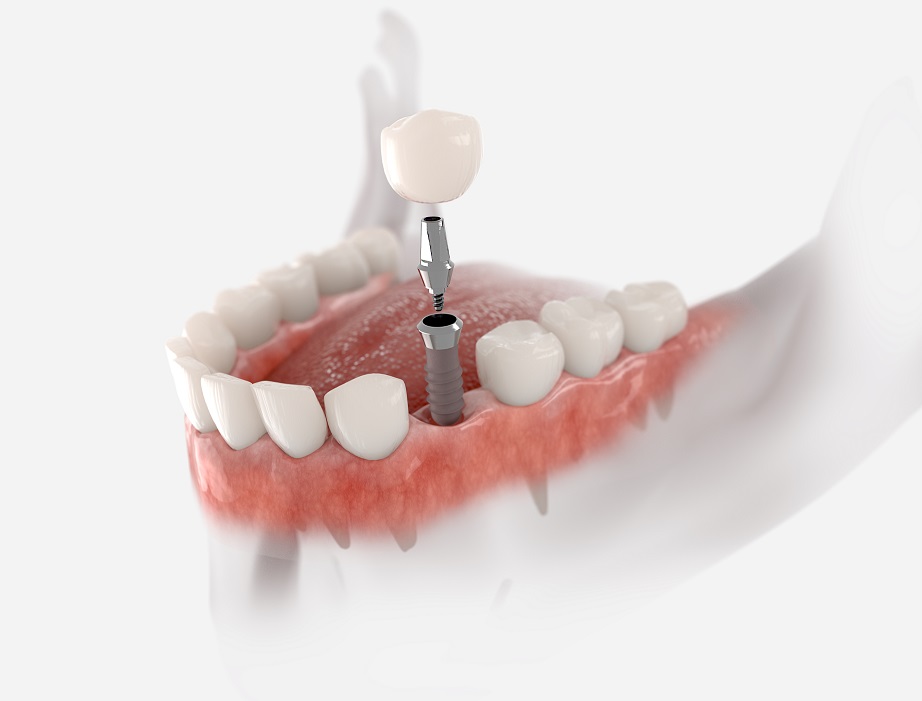
A dental implant is composed of three parts:
- A titanium screw (called an implant) embedded into the jawbone, replacing the original root
- A porcelain crown
- A connector that joins the two pieces (called an abutment)
Unlike dentures, which can be removed, a dental implant is permanent. The titanium screw fuses to the bone, making implants more durable than other options.
The implant is typically placed in two appointments: An oral surgeon, periodontist, or general dentist inserts it, generally with local anesthetic. You wear a temporary partial denture or retainer until the gums heal, which often takes a few months. Then the dentist attaches a porcelain or gold crown. Each implant can take as little as 30 minutes to place.
Compared with bridgework — which often needs to be replaced after 10 years — dental implants don’t decay. Their placement doesn’t interfere with healthy teeth, and with the right care, most will last a lifetime.
The average dental implant costs about $4,000 per tooth which includes the implant and crown. Check with your insurance company to see if they cover the cost. Patients view them as an investment in their long-term oral health, Macedo says.
Implants have success rates topping 95%, and they’re a great option for people who are healthy enough to get routine dental procedures. But they’re not right for everyone. Dentists may caution against implants for people with gum disease or those who don’t have enough bone to support the titanium implant. Children, whose jaws are still growing, should wait until their late teens.
Ask Your Doctor
If your dentist recommends an implant, Macedo suggests you ask these questions before making an appointment.
Could any medical or lifestyle issues I have, make the procedure a bad idea for me? People with certain health problems — including uncontrolled and heart disease– and those who are smokers, may need more checkups or tests.
Who will do the procedure? Depending on its complexity, your dentist may refer you to an oral surgeon or prosthodontist to place the implants.
Where and how is the implant made? To ensure you’re getting a quality implant made in a reputable lab by a qualified dental technician, ask about the lab’s certifications, materials, and staff training before signing off on the procedure.
How long will it take to heal? The gums will heal 2 to 4 months after the implant is placed. “The upper jaw heals more slowly than the lower jaw,” Macedo says
Sources
Manuel Macedo DDS, MS, PhD, assistant professor of dentistry, Oregon Health and Science University.
AAID.
YourDentristryGuide.com.
Myoms.org.




